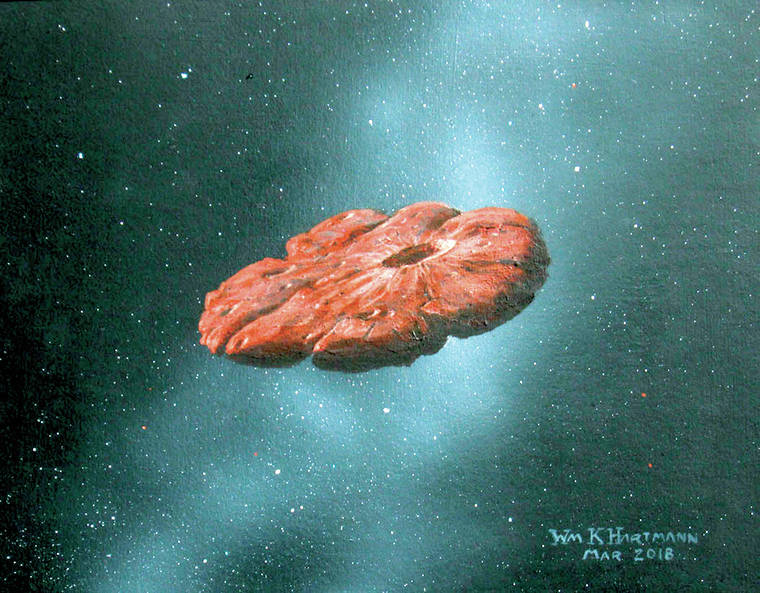An asteroid wider than the Empire State Building is tall will make a “close” pass by the Earth on Sunday, when astronomers will use a Maunakea telescope to attempt to determine the object’s composition.
The asteroid, designated 2001 FO32, will pass within 1.25 million miles of Earth — about five times the distance between Earth and the moon — which will give researchers an opportunity to use NASA’s Infrared Telescope Facility, which is operated by the University of Hawaii, to observe the object.
John Rayner, director of the IRTF, said the telescope will be able to conduct a spectroscopic analysis of the asteroid in order to determine its composition.
By analyzing what Rayner called “the wiggles” of the spectrum of light reflected by the asteroid, Vishnu Reddy, a University of Arizona professor, will be able to determine what it’s made of — and how much damage it could do if it struck the planet.
“You could have asteroids that are mostly iron or stony asteroids, and those are more likely to burn up in the atmosphere,” Rayner said. “Or it could be something called a carbonaceous chondrite, which is really interesting, and more volatile.”
Because carbonaceous chondrites can contain certain amounts of water, they are liable to explode in the atmosphere, which can be more dangerous than a direct surface impact under certain circumstances.
Rayner said a meteorite airburst is comparable to a nuclear detonation — a 1908 incident in Russia that involved the probable airburst of a meteorite between 50 meters and 190 meters wide leveled nearly 1,000 square miles of forest.
2001 FO32 is considerably larger than that one, however. Rayner said it is estimated to be 500 meters in diameter — roughly the length of a Nimitz-class aircraft carrier — with a mass of about 200,000 metric tons.
Roy Gal, IRTF associate astronomer, said 2001 FO32 might not necessarily cause a mass extinction event if it struck the planet — the Chicxulub Impactor, the meteorite that wiped out the dinosaurs 66 million years ago, was about 30 times larger — but said it still could be considered “a city-destroyer.”
Of course, neither 2001 FO32 nor any other known asteroid poses any danger to Earth for the next 100 years.
NASA’s Planetary Defense Coordination Office identified the trajectories of thousands of near-Earth objects larger than 140 meters in size and determined that none have a significant chance to hit Earth in the next century.
However, the Planetary Defense Coordination Office also estimates that it has detected, to date, less than half of the thousands of near-Earth objects larger than 140 meters that are estimated to exist.
The asteroid will make its flyby at about 6 p.m. Sunday. A livestream of the event is viewable at virtualtelescope.eu/webtv.
Email Michael Brestovansky at mbrestovansky@hawaiitribune-herald.com.

